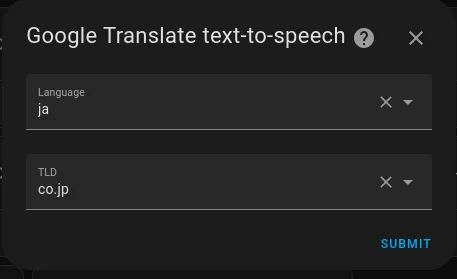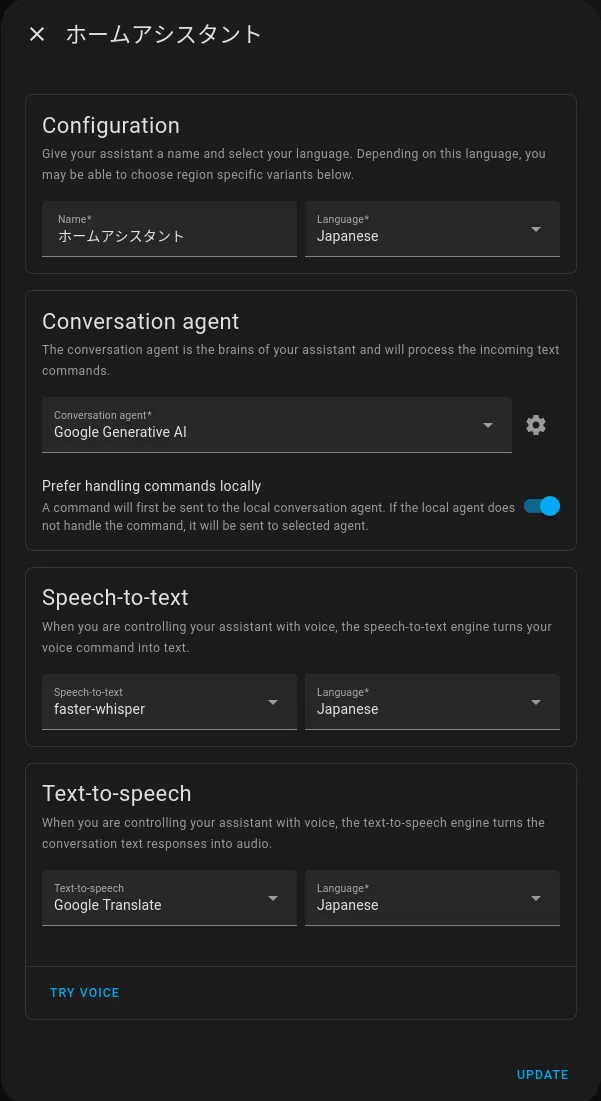Talking to Your Home Assistant Voice Assistant
🏠 Talking to Your Home (Full Setup Guide)
Section titled “🏠 Talking to Your Home (Full Setup Guide)”Home Assistant is a powerful open-source smart home platform, and did you know? It can also become your very own voice assistant—just like Siri, Alexa, or Google Home.
But unlike those assistants, Home Assistant can also talk to you first, thanks to its built-in automation system and customizable Large Language Model (LLM) integration. That’s right—your home can start the conversation.
There are many ways to achieve similar results in Home Assistant. In this article, I’ll show you how I personally set it up in my home.
🧠 Why Home Assistant Voice Assistant Is Special
Section titled “🧠 Why Home Assistant Voice Assistant Is Special”Voice assistants like Siri or Alexa mostly rely on one-way communication: you ask, they respond.
But with Home Assistant, you can:
- Create two-way conversations
- Automate alerts that talk to you
- Customize your assistant’s behavior
- Run everything locally, with no cloud dependency (if you want)
Want your house to say “Hey, the front door is still open!” or “The air conditioner might be broken”? Home Assistant can do that—on your terms.
🔧 Anatomy of a Voice Assistant in Home Assistant
Section titled “🔧 Anatomy of a Voice Assistant in Home Assistant”To create a functional voice assistant, we need three key components:
- Ears → Speech-to-Text (STT)
- Brain → Large Language Model (LLM)
- Mouth → Text-to-Speech (TTS)
Let’s build this step by step.
🧠 The Brain: Large Language Model (LLM) in Home Assistant
Section titled “🧠 The Brain: Large Language Model (LLM) in Home Assistant”Home Assistant uses a built-in LLM (Large Language Model) to understand and respond to your queries.
Unfortunately, the lightweight built-in LLM does not support Japanese yet due to lack of community contributions.
I didn’t have the hardware to run something like Ollama locally, so I opted to use Google Generative AI (Gemini) as my conversation engine. It’s free and works well for light usage.
🔑 Setting up Gemini
Section titled “🔑 Setting up Gemini”- Get a Google account
- Go to Google AI Studio to generate an API key
- In Home Assistant, add the Google Generative AI integration and paste your API key
👂 The Ears: Speech to Text with Whisper
Section titled “👂 The Ears: Speech to Text with Whisper”For converting your voice into text, I use Whisper. You can find it in the Home Assistant Add-on Store by searching for “Whisper”.

The performance depends on your device’s hardware.

🐳 Docker Compose Example (Container-based Setup)
Section titled “🐳 Docker Compose Example (Container-based Setup)”whisper: image: rhasspy/wyoming-whisper:latest container_name: speech-to-text command: --model tiny-int8 --language en restart: unless-stopped volumes: - /home/rav/storage/mwhisper:/data ports: - 10300:10300Even with the language set to en, it works surprisingly well for Japanese too.
🗣️ The Mouth: Text to Speech with Google Translate
Section titled “🗣️ The Mouth: Text to Speech with Google Translate”Because Japanese text-to-speech is not natively supported in Home Assistant, I use the Google Translate TTS integration.
✅ Settings
Section titled “✅ Settings”- Language:
ja - Region:
co.jp

🎛️ Putting It All Together
Section titled “🎛️ Putting It All Together”Now go to the voice assistant setup page then follow these steps:
- Create a new voice assistant (name it as you like)
- Conversation Agent: Google Generative AI
- Speech-to-Text: Whisper or Faster-Whisper (set to Japanese)
- Text-to-Speech: Google Translate

🔓 Expose Devices
Section titled “🔓 Expose Devices”At the top of the assistant settings screen, click on the “Expose” tab and select which devices your voice assistant can access.
🧪 Try It Out !
Section titled “🧪 Try It Out !”You can now talk to your house!
💬 Chat via text
Section titled “💬 Chat via text”Click the chat bubble icon on the dashboard to start a text conversation with your assistant.

🎤 Talk via voice
Section titled “🎤 Talk via voice”Click the mic icon or use a dedicated device (see below).
🛠️ Optional Hardware: Home Assistant Voice Assistant Device
Section titled “🛠️ Optional Hardware: Home Assistant Voice Assistant Device”The easiest way to get a great voice experience is to buy the:
👉 Home Assistant Voice Assistant Preview Edition
It has a microphone and speaker built in, and acts as a dedicated voice terminal for Home Assistant.
This feature is still under active development, but there has been major progress in the past few months.
You can find installation instructions in the Home Assistant documentation.
🚀 Final Thoughts: When Your Home Talks First
Section titled “🚀 Final Thoughts: When Your Home Talks First”With Home Assistant, you’re not just commanding your home—you’re having a conversation with it.
From morning weather alerts, to reminders about open windows or broken appliances, your house can now proactively assist you.
The future of truly intelligent, personalized smart homes is here—and it speaks your language.
💡 If you found this guide helpful, share it with others and start a conversation with your home today!
